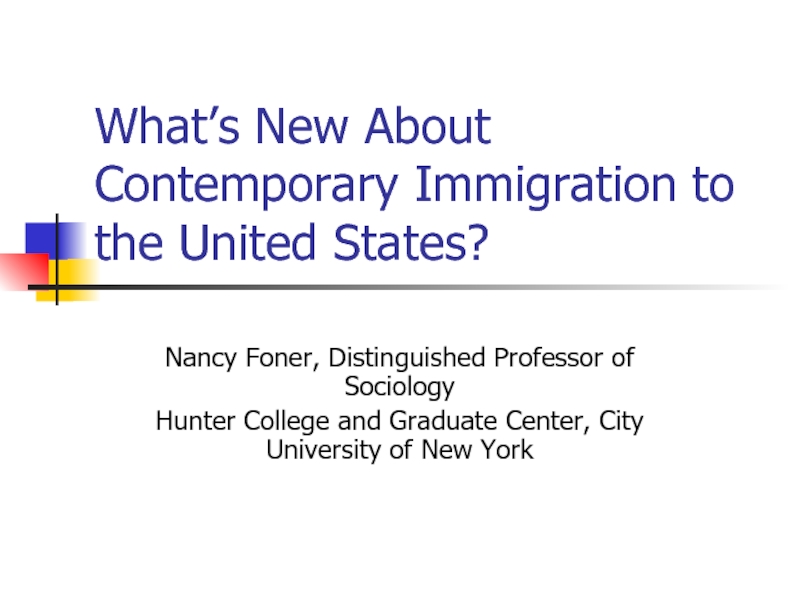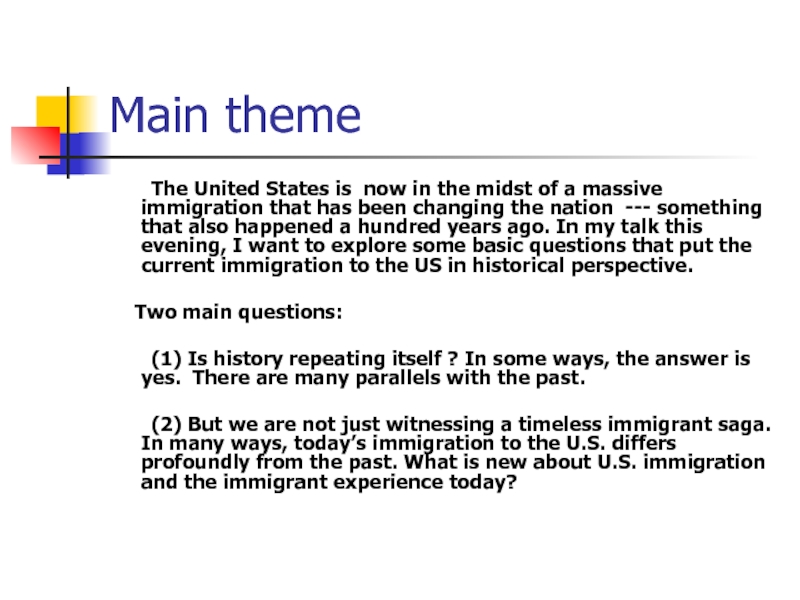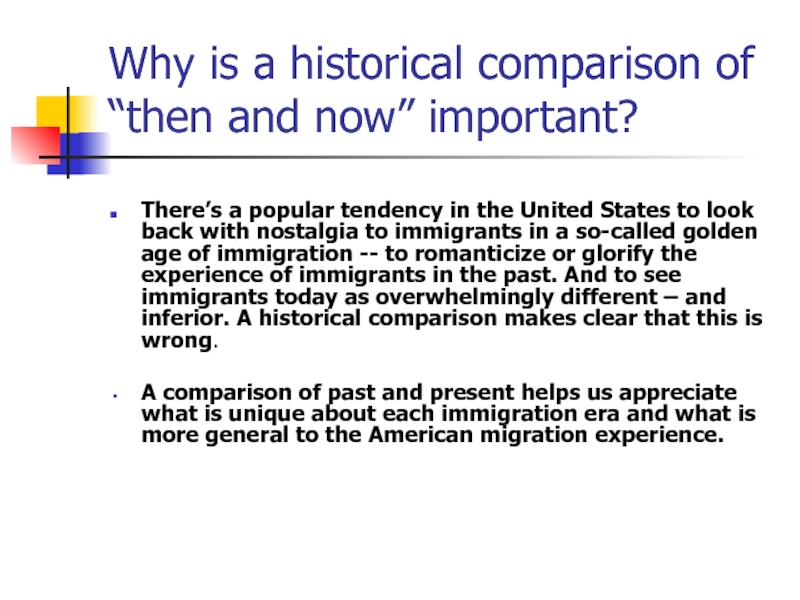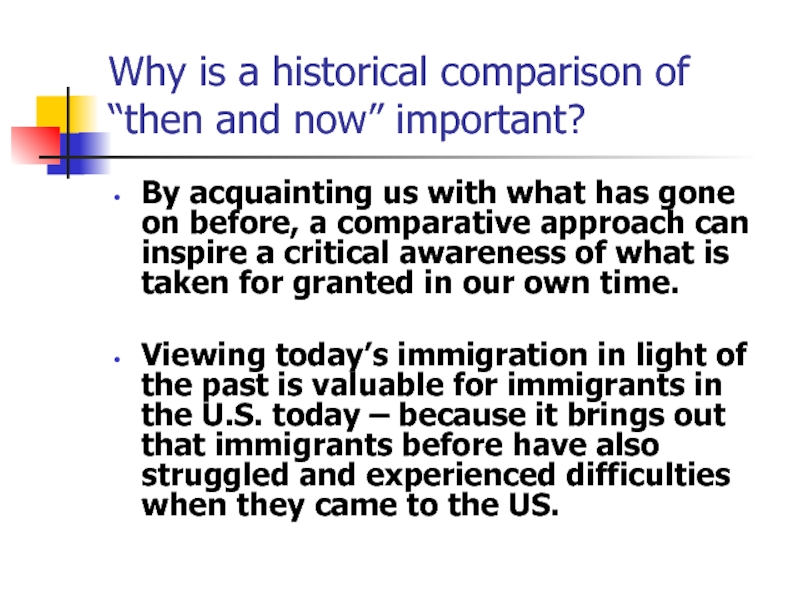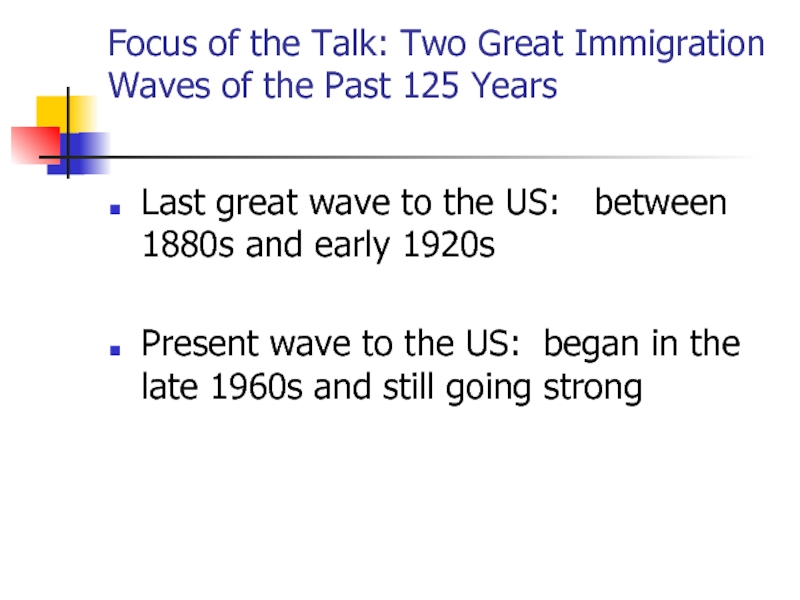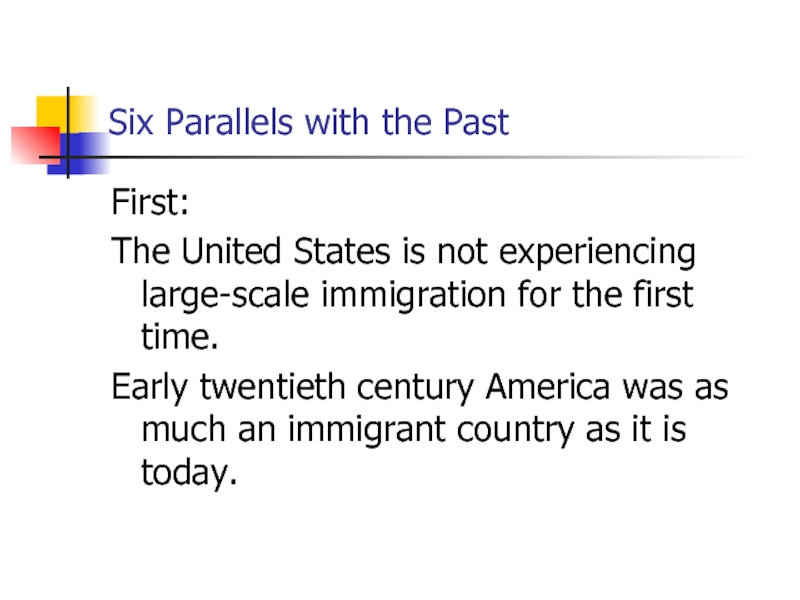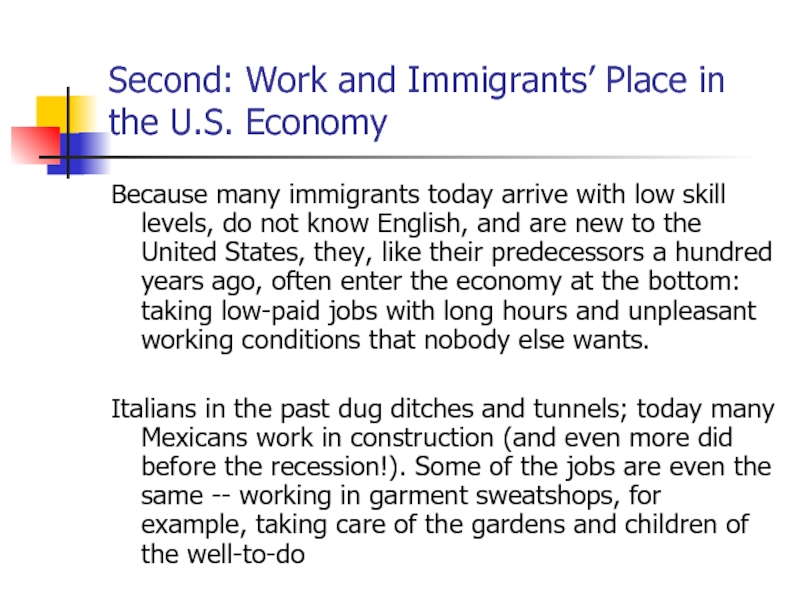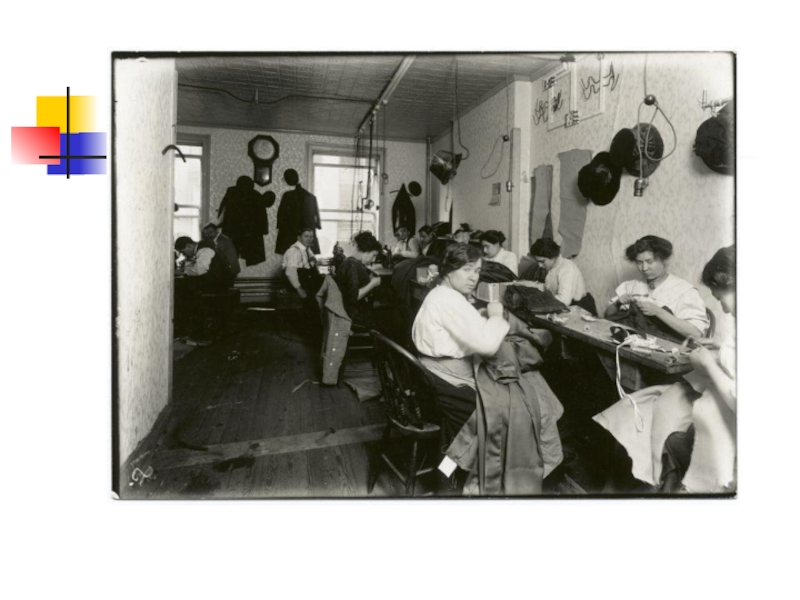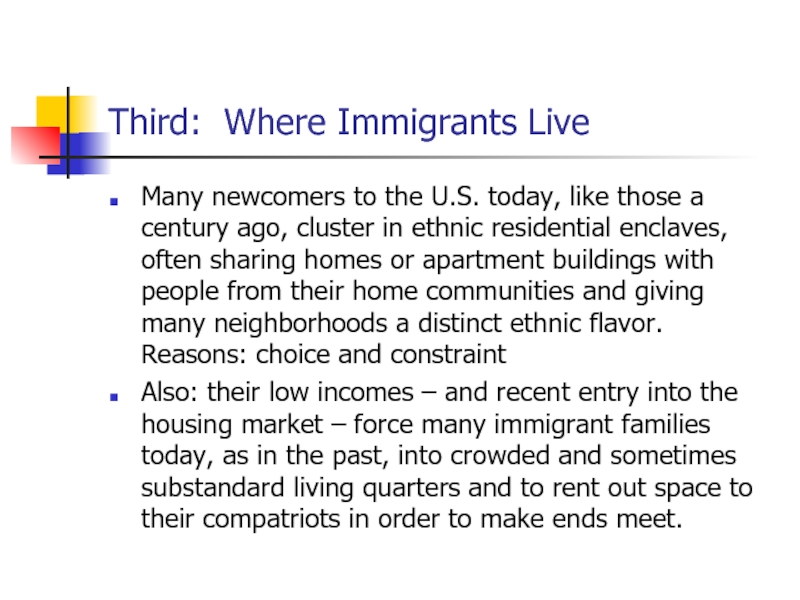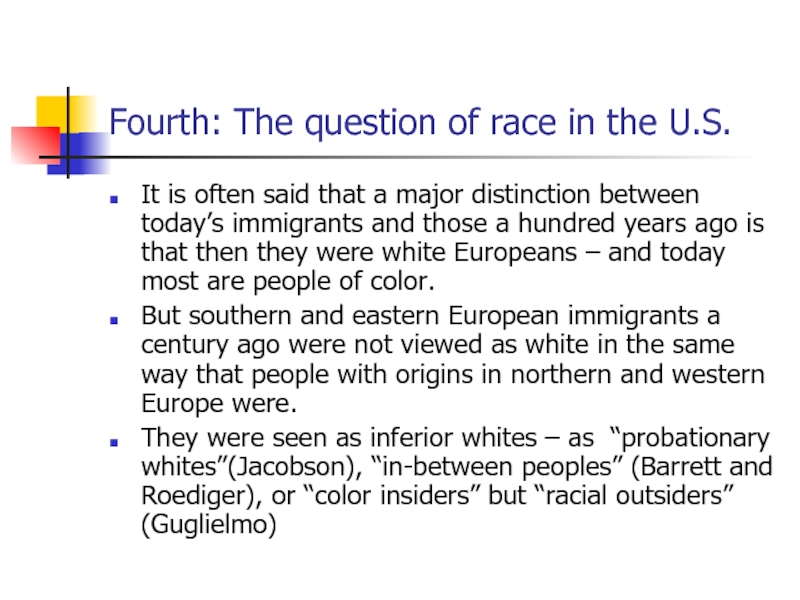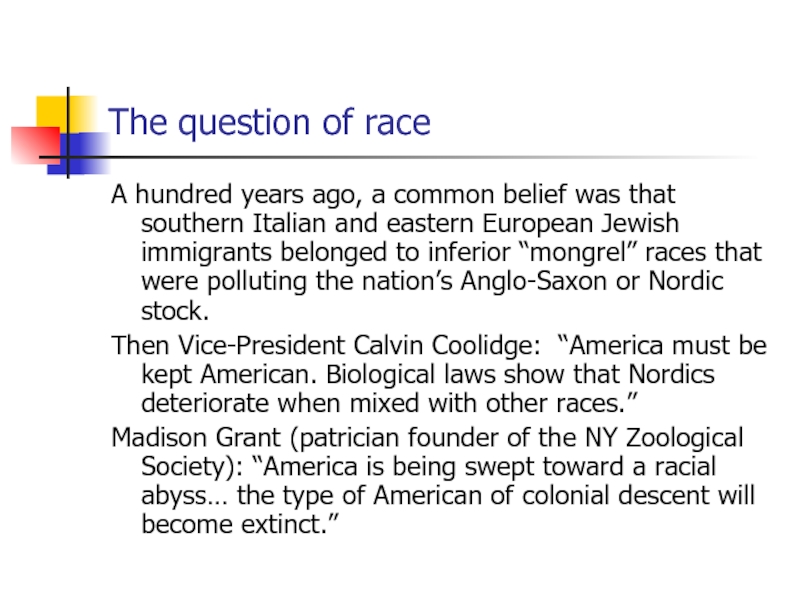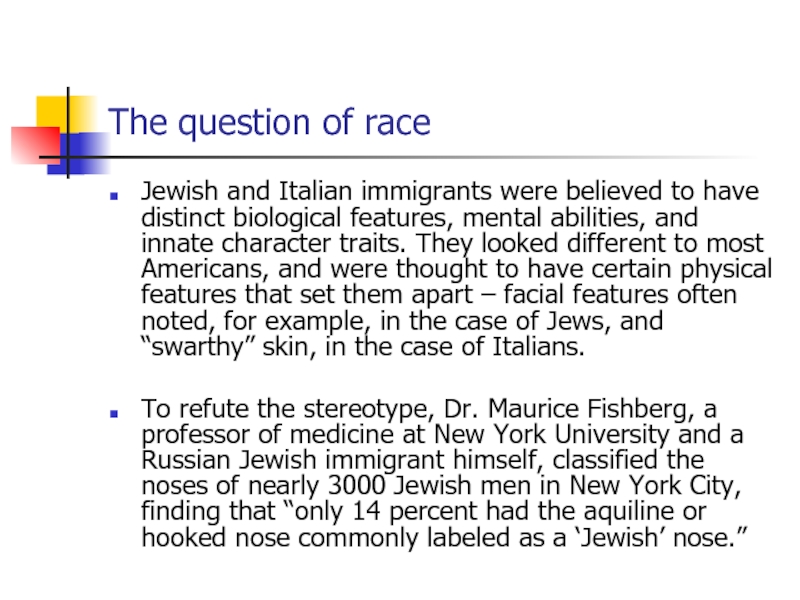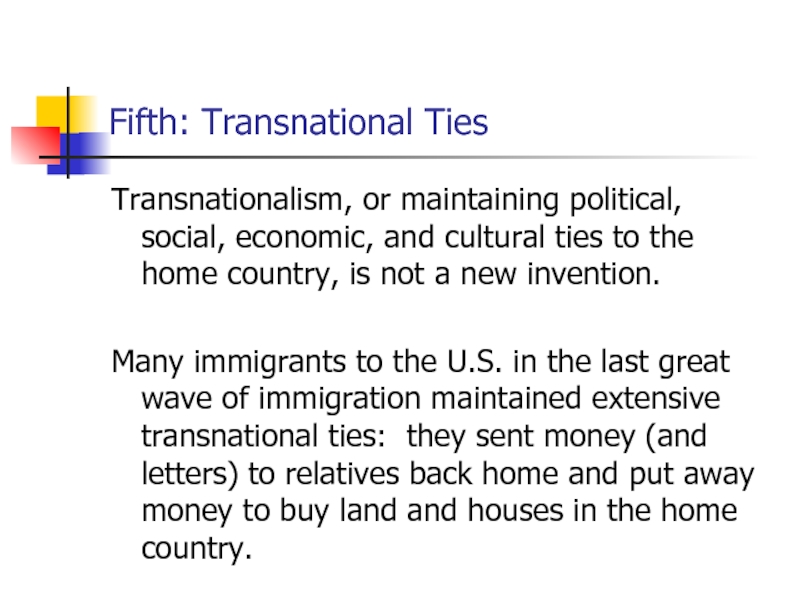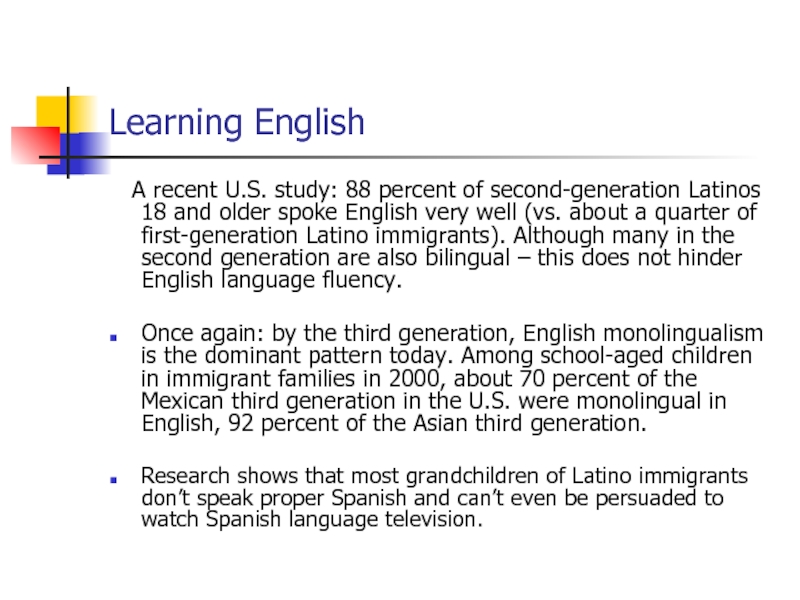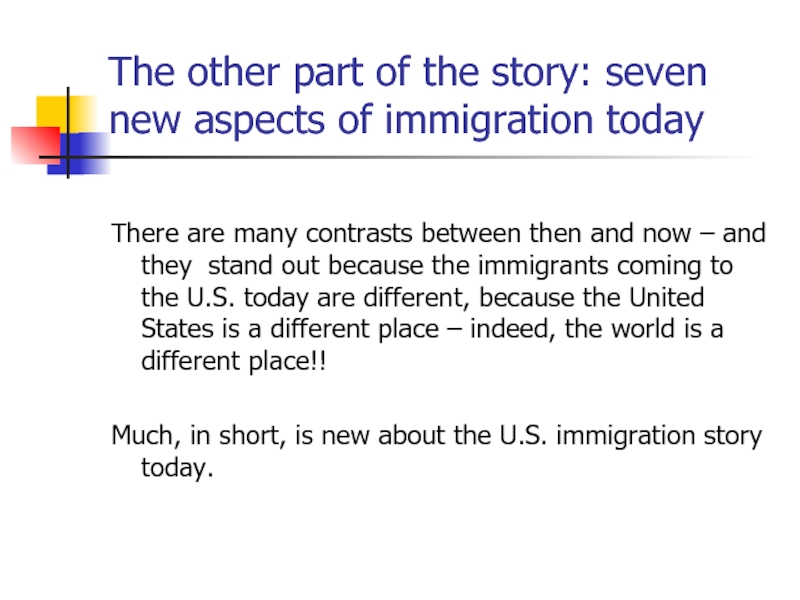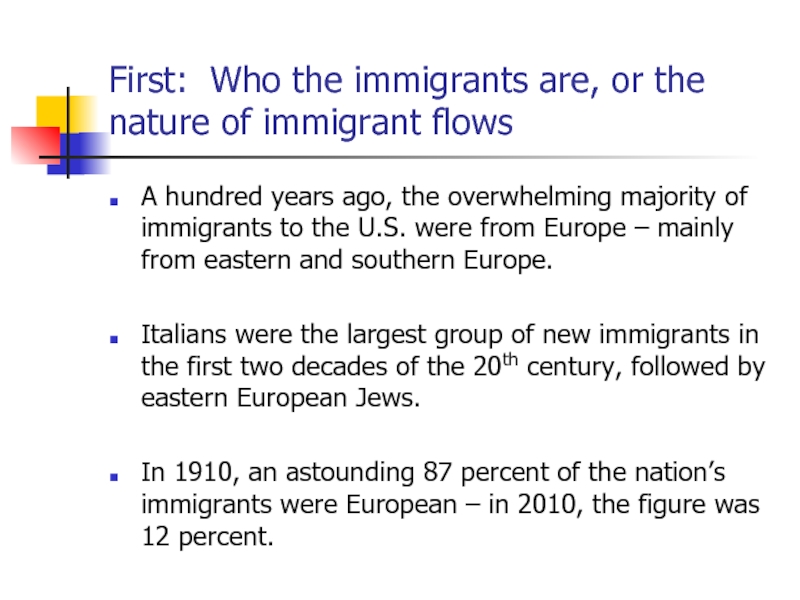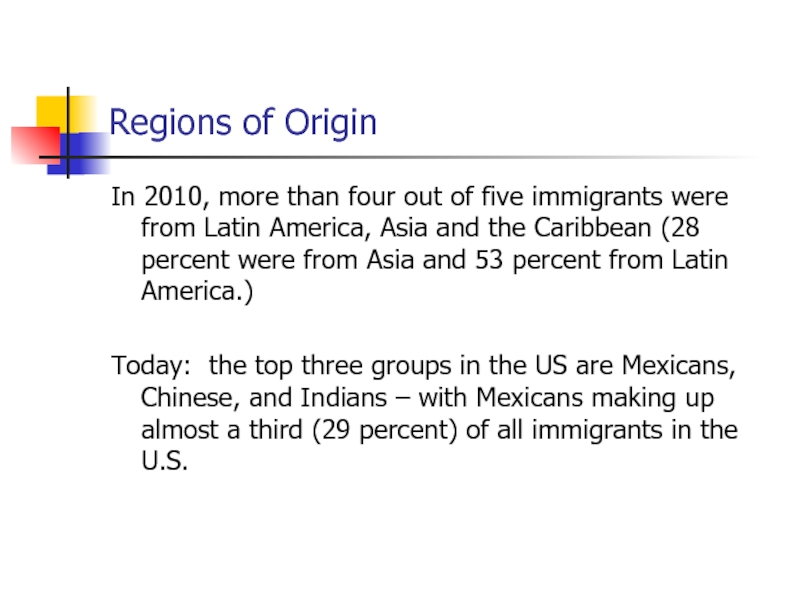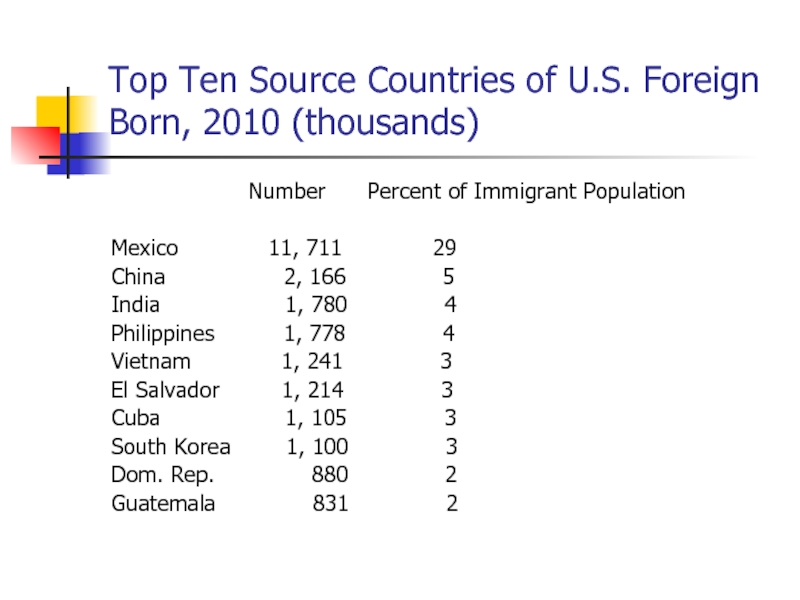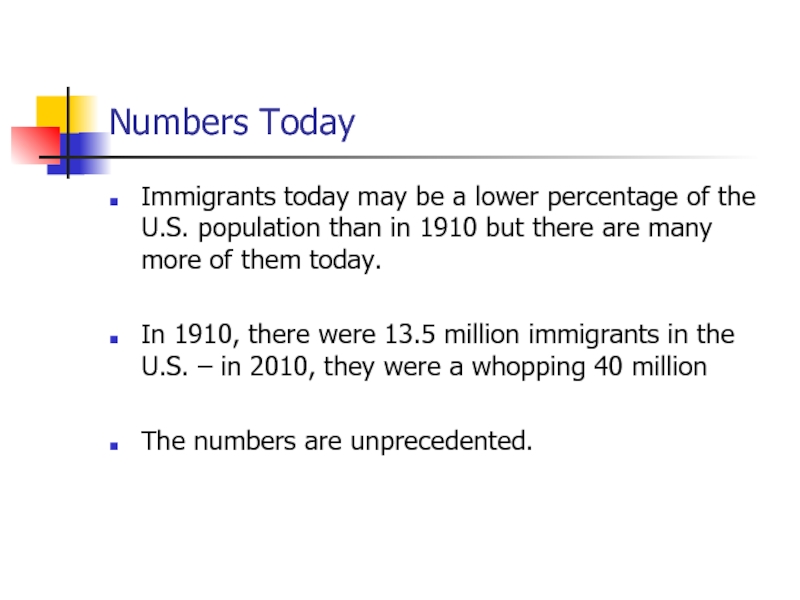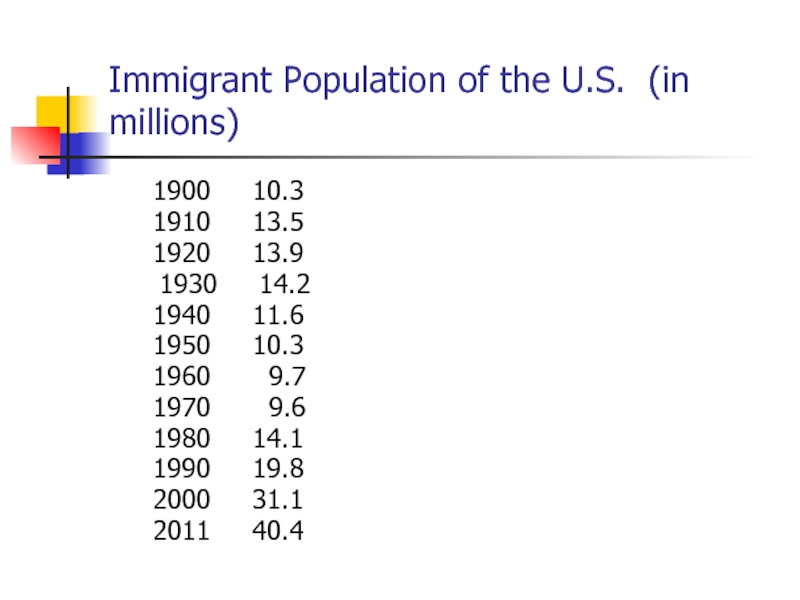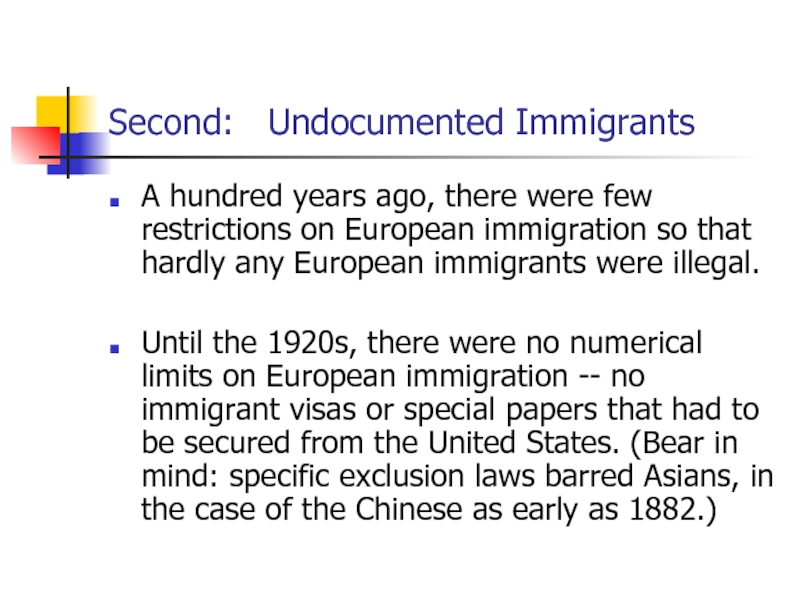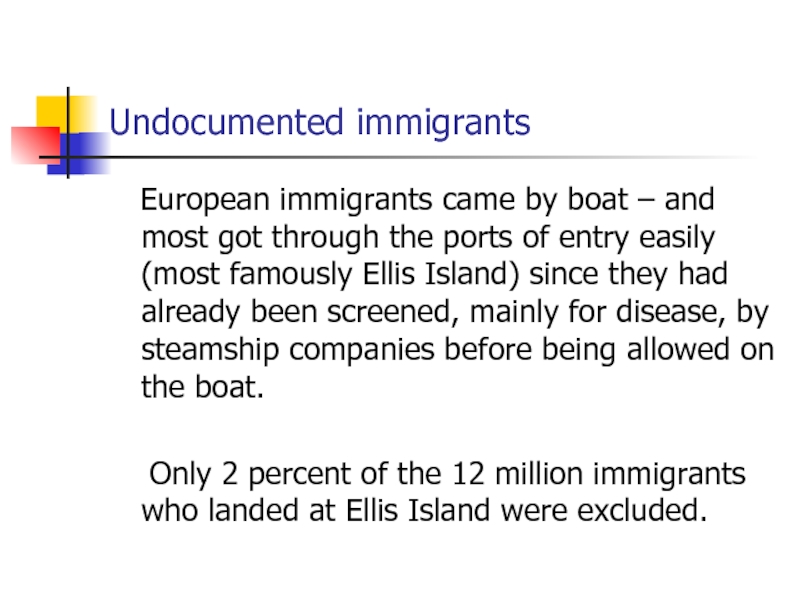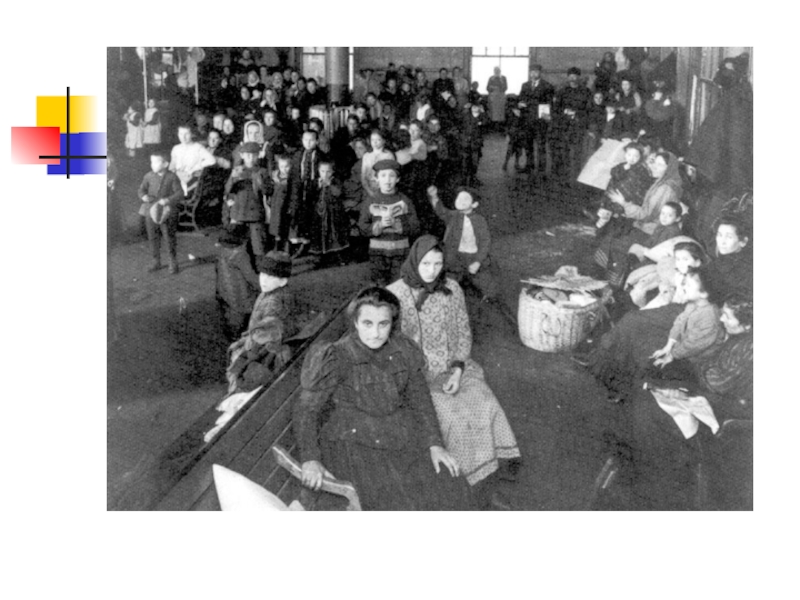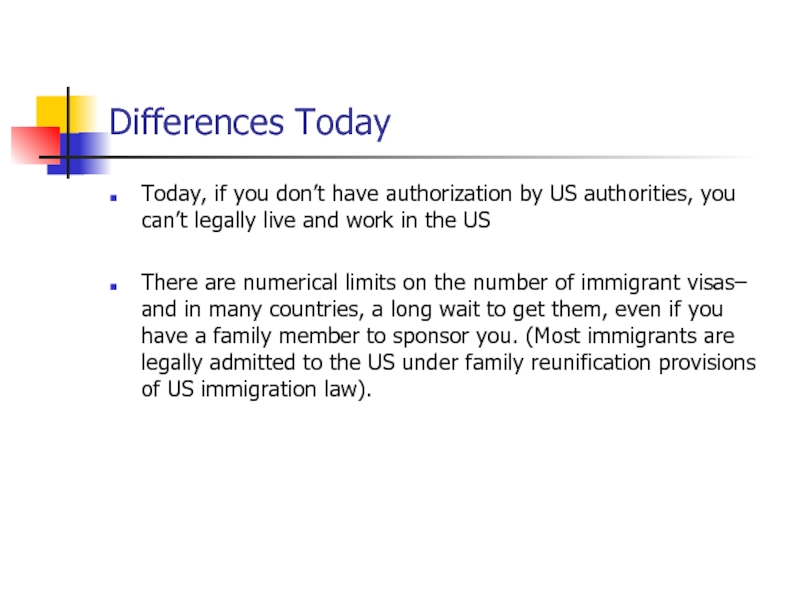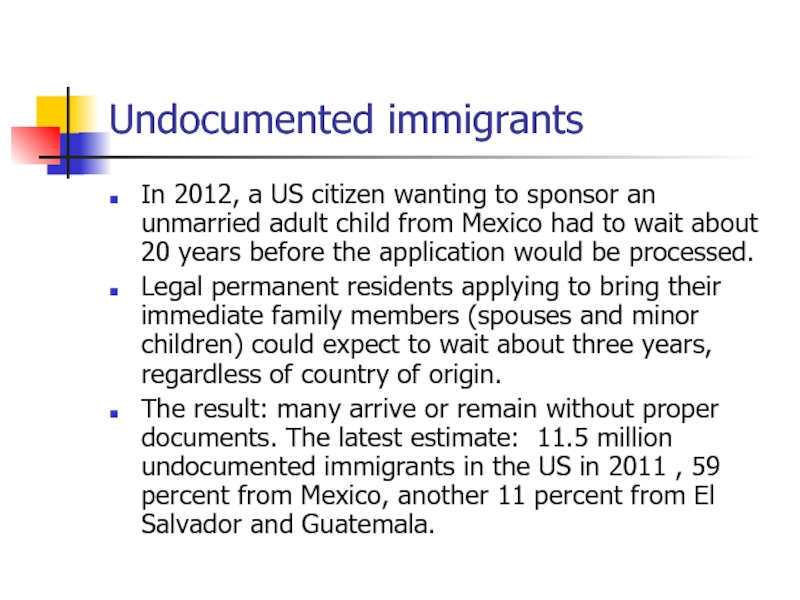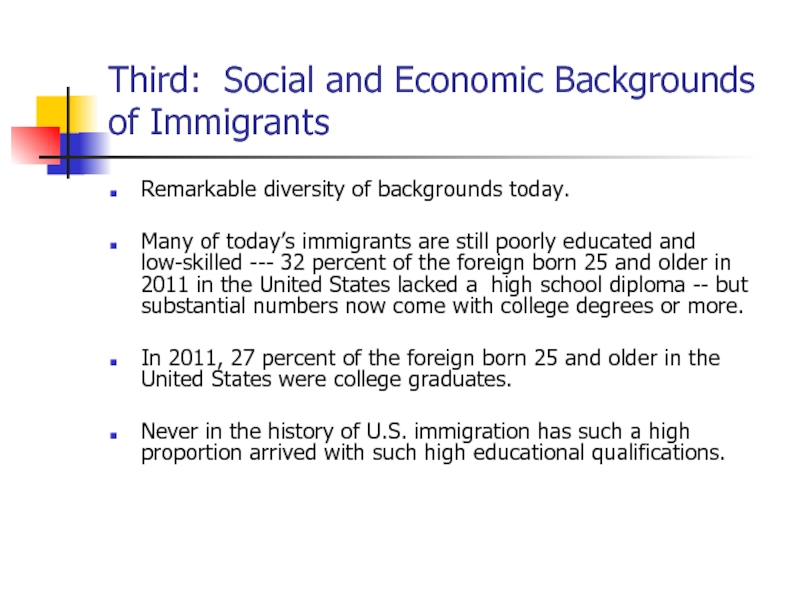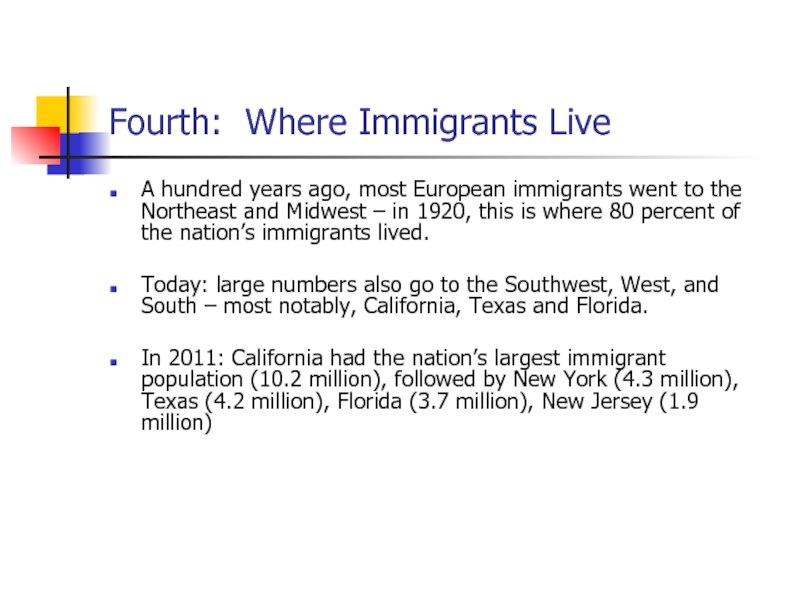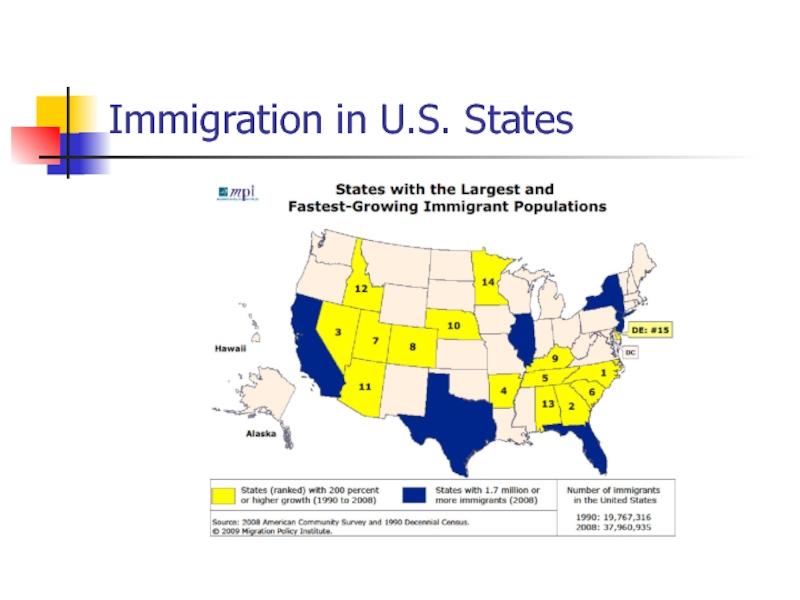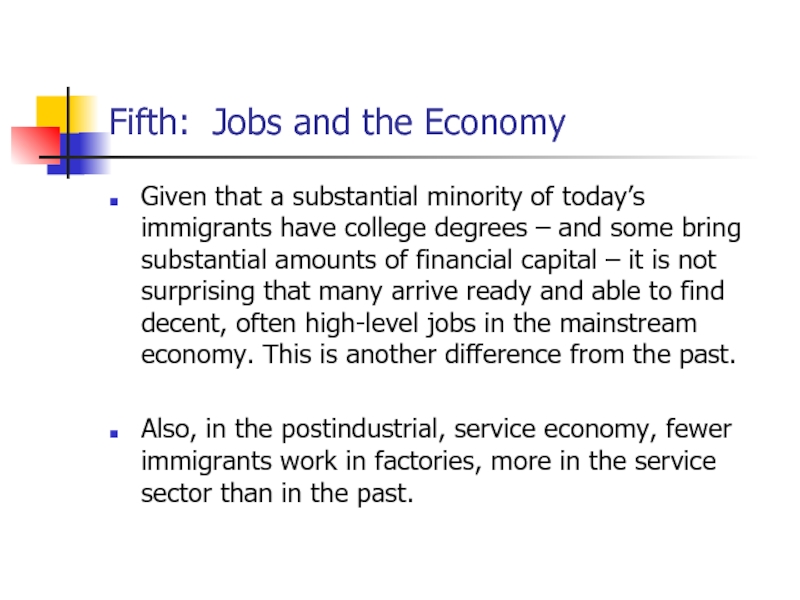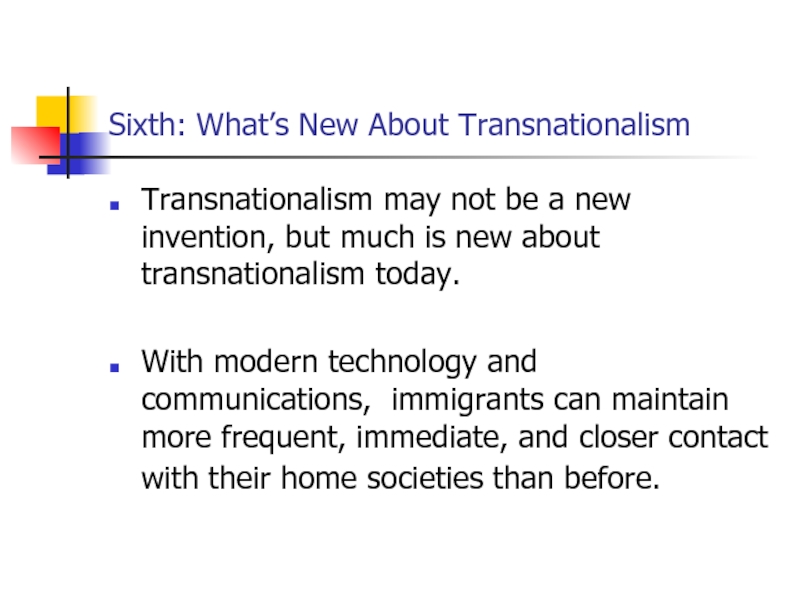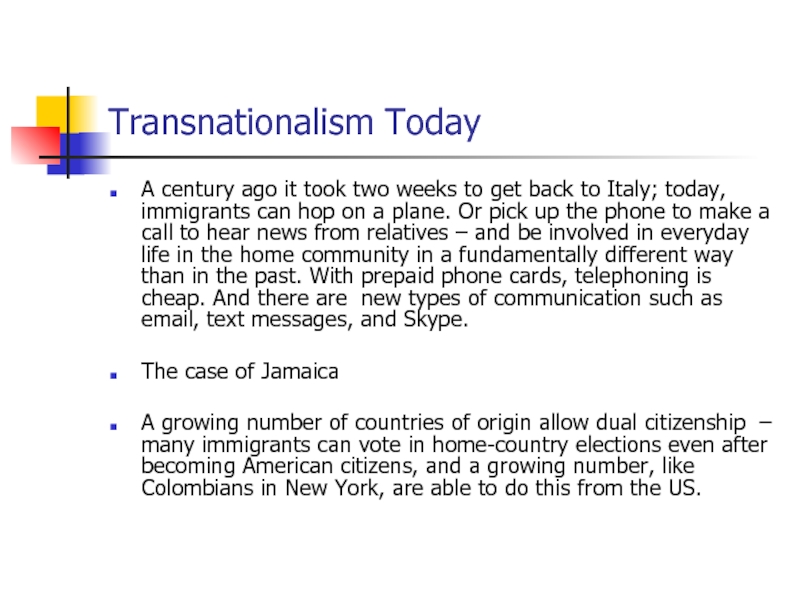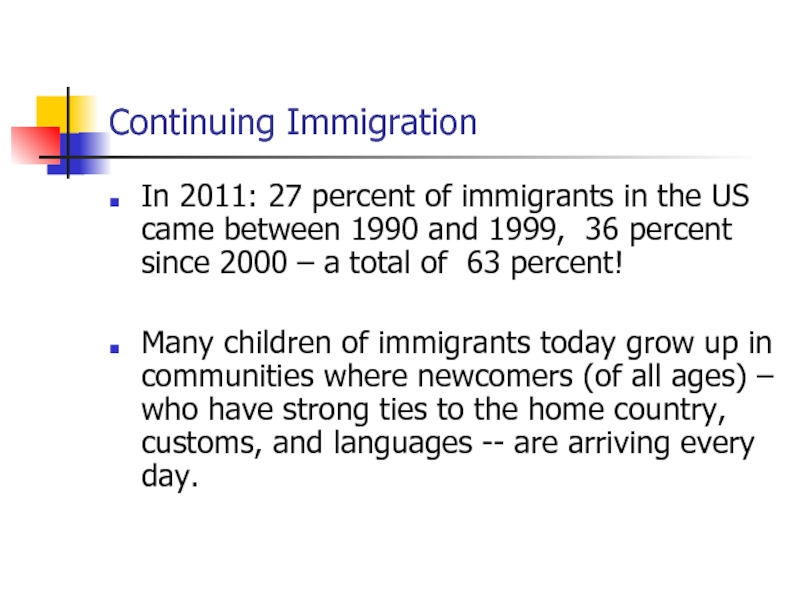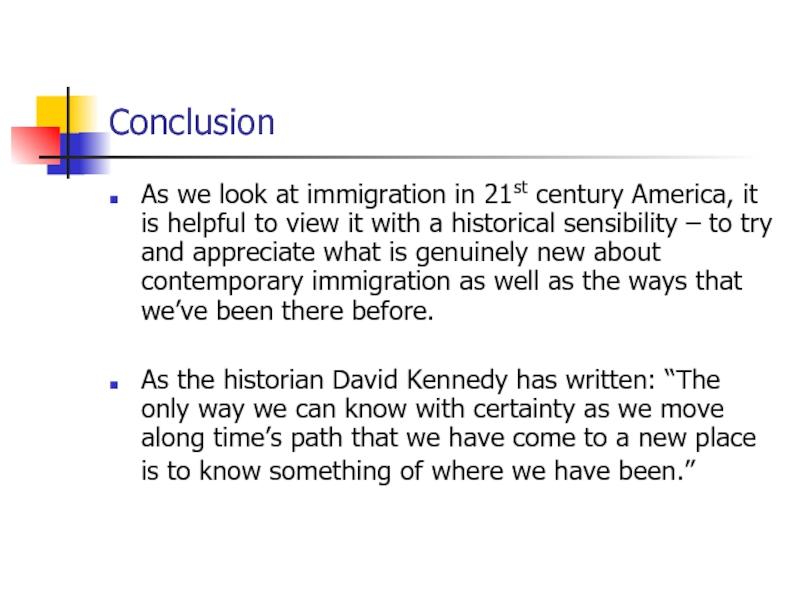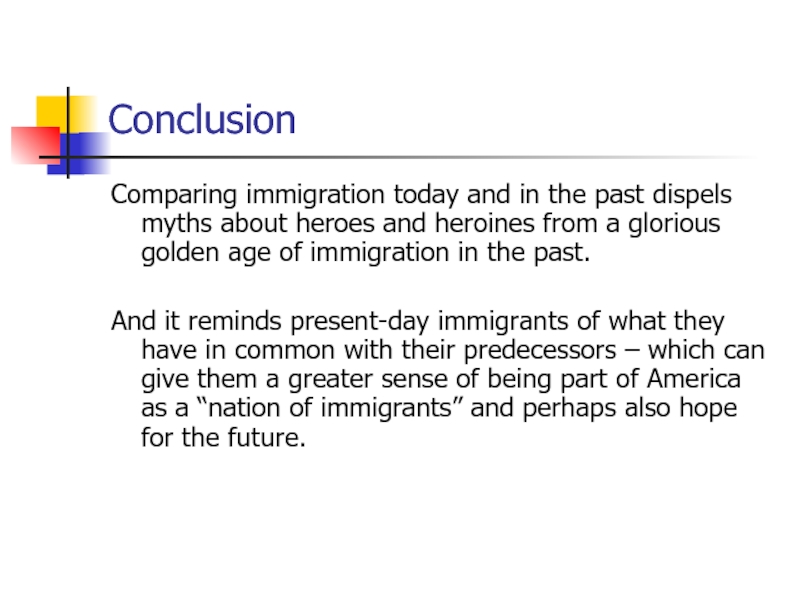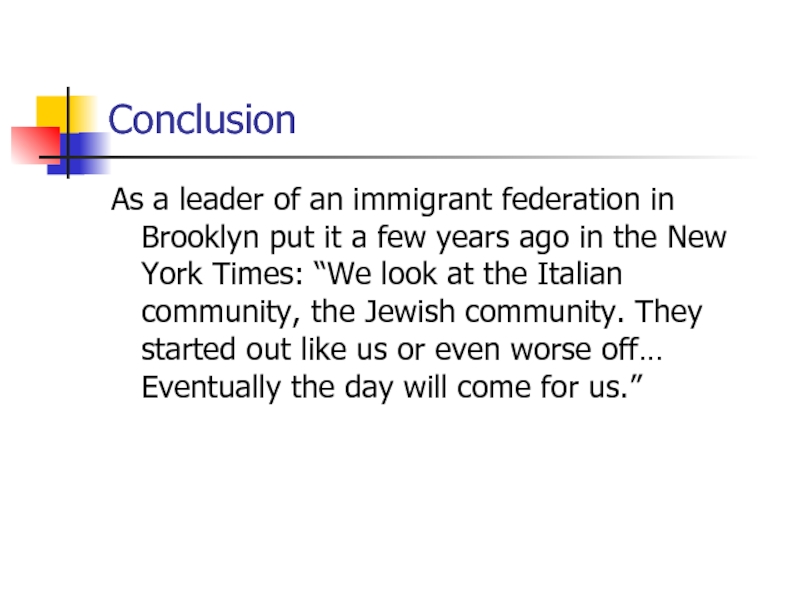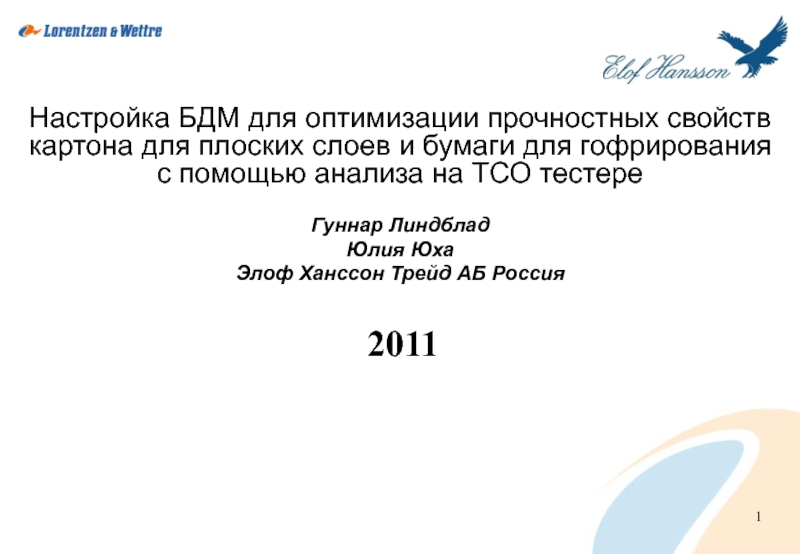- Главная
- Разное
- Дизайн
- Бизнес и предпринимательство
- Аналитика
- Образование
- Развлечения
- Красота и здоровье
- Финансы
- Государство
- Путешествия
- Спорт
- Недвижимость
- Армия
- Графика
- Культурология
- Еда и кулинария
- Лингвистика
- Английский язык
- Астрономия
- Алгебра
- Биология
- География
- Детские презентации
- Информатика
- История
- Литература
- Маркетинг
- Математика
- Медицина
- Менеджмент
- Музыка
- МХК
- Немецкий язык
- ОБЖ
- Обществознание
- Окружающий мир
- Педагогика
- Русский язык
- Технология
- Физика
- Философия
- Химия
- Шаблоны, картинки для презентаций
- Экология
- Экономика
- Юриспруденция
What’s New About Contemporary Immigration to the United States? презентация
Содержание
- 1. What’s New About Contemporary Immigration to the United States?
- 2. Main theme The United States is now
- 3. Why is a historical comparison of “then
- 4. Why is a historical comparison of “then
- 5. Focus of the Talk: Two Great Immigration
- 6. Shameless Promotion
- 7. Six Parallels with the Past First:
- 8. Foreign-Born as a Percentage of the U.S.
- 9. Second: Work and Immigrants’ Place in the
- 11. Third: Where Immigrants Live Many newcomers to
- 12. Fourth: The question of race in the
- 13. The question of race A hundred years
- 14. The question of race Jewish and
- 15. Fifth: Transnational Ties Transnationalism, or maintaining political,
- 16. Transnational Ties Large numbers of Italians (“birds
- 17. Sixth: Learning English A common fear is
- 18. Learning English The standard three-generation model of
- 19. Learning English A recent U.S.
- 20. The other part of the
- 21. First: Who the immigrants are, or the
- 22. Regions of Origin In 2010, more than
- 23. Top Ten Source Countries of U.S. Foreign
- 24. Numbers Today Immigrants today may be a
- 25. Immigrant Population of the U.S. (in millions)
- 26. Second: Undocumented Immigrants A hundred years
- 27. Undocumented immigrants European immigrants came
- 29. Differences Today Today, if you don’t have
- 30. Undocumented immigrants In 2012, a US citizen
- 31. Third: Social and Economic Backgrounds of Immigrants
- 32. Fourth: Where Immigrants Live A hundred years
- 33. Immigration in U.S. States
- 34. Fifth: Jobs and the Economy Given that
- 35. Jobs and the Economy Legal status wasn’t
- 36. Sixth: What’s New About Transnationalism Transnationalism may
- 37. Transnationalism Today A century ago it took
- 38. Seventh: Continuing Immigration In the past, there
- 39. Continuing Immigration In 2011: 27 percent of
- 40. Conclusion As we look at immigration in
- 41. Conclusion Comparing immigration today and in the
- 42. Conclusion As a leader of an immigrant
- 43. Thank you!!!
Слайд 1What’s New About Contemporary Immigration to the United States?
Nancy Foner, Distinguished
Hunter College and Graduate Center, City University of New York
Слайд 2Main theme
The United States is now in the midst of a
Two main questions:
(1) Is history repeating itself ? In some ways, the answer is yes. There are many parallels with the past.
(2) But we are not just witnessing a timeless immigrant saga. In many ways, today’s immigration to the U.S. differs profoundly from the past. What is new about U.S. immigration and the immigrant experience today?
Слайд 3Why is a historical comparison of “then and now” important?
There’s
A comparison of past and present helps us appreciate what is unique about each immigration era and what is more general to the American migration experience.
Слайд 4Why is a historical comparison of “then and now” important?
By acquainting
Viewing today’s immigration in light of the past is valuable for immigrants in the U.S. today – because it brings out that immigrants before have also struggled and experienced difficulties when they came to the US.
Слайд 5Focus of the Talk: Two Great Immigration Waves of the Past
Last great wave to the US: between 1880s and early 1920s
Present wave to the US: began in the late 1960s and still going strong
Слайд 7Six Parallels with the Past
First:
The United States is not experiencing
Early twentieth century America was as much an immigrant country as it is today.
Слайд 8Foreign-Born as a Percentage of the U.S. Population
1900
1910 14.7
1920 13.2
1930 11.6
1940 8.8
1950 6.9
1960 5.4
1970 4.7
1980 6.2
1990 7.9
2000 11.1
2011 13.0
Слайд 9Second: Work and Immigrants’ Place in the U.S. Economy
Because many immigrants
Italians in the past dug ditches and tunnels; today many Mexicans work in construction (and even more did before the recession!). Some of the jobs are even the same -- working in garment sweatshops, for example, taking care of the gardens and children of the well-to-do
Слайд 11Third: Where Immigrants Live
Many newcomers to the U.S. today, like those
Also: their low incomes – and recent entry into the housing market – force many immigrant families today, as in the past, into crowded and sometimes substandard living quarters and to rent out space to their compatriots in order to make ends meet.
Слайд 12Fourth: The question of race in the U.S.
It is often said
But southern and eastern European immigrants a century ago were not viewed as white in the same way that people with origins in northern and western Europe were.
They were seen as inferior whites – as “probationary whites”(Jacobson), “in-between peoples” (Barrett and Roediger), or “color insiders” but “racial outsiders” (Guglielmo)
Слайд 13The question of race
A hundred years ago, a common belief was
Then Vice-President Calvin Coolidge: “America must be kept American. Biological laws show that Nordics deteriorate when mixed with other races.”
Madison Grant (patrician founder of the NY Zoological Society): “America is being swept toward a racial abyss… the type of American of colonial descent will become extinct.”
Слайд 14
The question of race
Jewish and Italian immigrants were believed to have
To refute the stereotype, Dr. Maurice Fishberg, a professor of medicine at New York University and a Russian Jewish immigrant himself, classified the noses of nearly 3000 Jewish men in New York City, finding that “only 14 percent had the aquiline or hooked nose commonly labeled as a ‘Jewish’ nose.”
Слайд 15Fifth: Transnational Ties
Transnationalism, or maintaining political, social, economic, and cultural ties
Many immigrants to the U.S. in the last great wave of immigration maintained extensive transnational ties: they sent money (and letters) to relatives back home and put away money to buy land and houses in the home country.
Слайд 16Transnational Ties
Large numbers of Italians (“birds of passage”) engaged in circular
Some homeland governments – Italy being a prime example – were also involved with their citizens in the US, subsidizing organizations to help them, for example, and facilitating the flow of remittances homeward.
Слайд 17Sixth: Learning English
A common fear is that today’s immigrants and their
But when it comes to language, the similarities with the past stand out– and the fears that immigrants and their children today will not learn English are unfounded.
Слайд 18Learning English
The standard three-generation model of linguistic assimilation still holds:
the
the second generation tends to be bilingual but speaks English fluently;
and the third generation is, overwhelmingly, monolingual in English.
Слайд 19Learning English
A recent U.S. study: 88 percent of second-generation
Once again: by the third generation, English monolingualism is the dominant pattern today. Among school-aged children in immigrant families in 2000, about 70 percent of the Mexican third generation in the U.S. were monolingual in English, 92 percent of the Asian third generation.
Research shows that most grandchildren of Latino immigrants don’t speak proper Spanish and can’t even be persuaded to watch Spanish language television.
Слайд 20 The other part of the story: seven new aspects of immigration
There are many contrasts between then and now – and they stand out because the immigrants coming to the U.S. today are different, because the United States is a different place – indeed, the world is a different place!!
Much, in short, is new about the U.S. immigration story today.
Слайд 21First: Who the immigrants are, or the nature of immigrant flows
A
Italians were the largest group of new immigrants in the first two decades of the 20th century, followed by eastern European Jews.
In 1910, an astounding 87 percent of the nation’s immigrants were European – in 2010, the figure was 12 percent.
Слайд 22Regions of Origin
In 2010, more than four out of five immigrants
Today: the top three groups in the US are Mexicans, Chinese, and Indians – with Mexicans making up almost a third (29 percent) of all immigrants in the U.S.
Слайд 23Top Ten Source Countries of U.S. Foreign Born, 2010 (thousands)
Mexico 11, 711 29
China 2, 166 5
India 1, 780 4
Philippines 1, 778 4
Vietnam 1, 241 3
El Salvador 1, 214 3
Cuba 1, 105 3
South Korea 1, 100 3
Dom. Rep. 880 2
Guatemala 831 2
Слайд 24Numbers Today
Immigrants today may be a lower percentage of the U.S.
In 1910, there were 13.5 million immigrants in the U.S. – in 2010, they were a whopping 40 million
The numbers are unprecedented.
Слайд 25Immigrant Population of the U.S. (in millions)
1900
1910 13.5
1920 13.9
1930 14.2
1940 11.6
1950 10.3
1960 9.7
1970 9.6
1980 14.1
1990 19.8
2000 31.1
2011 40.4
Слайд 26Second: Undocumented Immigrants
A hundred years ago, there were few restrictions
Until the 1920s, there were no numerical limits on European immigration -- no immigrant visas or special papers that had to be secured from the United States. (Bear in mind: specific exclusion laws barred Asians, in the case of the Chinese as early as 1882.)
Слайд 27Undocumented immigrants
European immigrants came by boat – and most
Only 2 percent of the 12 million immigrants who landed at Ellis Island were excluded.
Слайд 29Differences Today
Today, if you don’t have authorization by US authorities, you
There are numerical limits on the number of immigrant visas– and in many countries, a long wait to get them, even if you have a family member to sponsor you. (Most immigrants are legally admitted to the US under family reunification provisions of US immigration law).
Слайд 30Undocumented immigrants
In 2012, a US citizen wanting to sponsor an unmarried
Legal permanent residents applying to bring their immediate family members (spouses and minor children) could expect to wait about three years, regardless of country of origin.
The result: many arrive or remain without proper documents. The latest estimate: 11.5 million undocumented immigrants in the US in 2011 , 59 percent from Mexico, another 11 percent from El Salvador and Guatemala.
Слайд 31Third: Social and Economic Backgrounds of Immigrants
Remarkable diversity of backgrounds today.
Many
In 2011, 27 percent of the foreign born 25 and older in the United States were college graduates.
Never in the history of U.S. immigration has such a high proportion arrived with such high educational qualifications.
Слайд 32Fourth: Where Immigrants Live
A hundred years ago, most European immigrants went
Today: large numbers also go to the Southwest, West, and South – most notably, California, Texas and Florida.
In 2011: California had the nation’s largest immigrant population (10.2 million), followed by New York (4.3 million), Texas (4.2 million), Florida (3.7 million), New Jersey (1.9 million)
Слайд 34Fifth: Jobs and the Economy
Given that a substantial minority of today’s
Also, in the postindustrial, service economy, fewer immigrants work in factories, more in the service sector than in the past.
Слайд 35Jobs and the Economy
Legal status wasn’t an issue for European immigrants
Having a green card (permanent resident legal status) is not a recipe for success, but without it an immigrant has more trouble getting a good job and making a living wage in the formal economy – and this has enormous ramifications for their own lives and for their children’s lives as well.
Слайд 36Sixth: What’s New About Transnationalism
Transnationalism may not be a new invention,
With modern technology and communications, immigrants can maintain more frequent, immediate, and closer contact with their home societies than before.
Слайд 37Transnationalism Today
A century ago it took two weeks to get back
The case of Jamaica
A growing number of countries of origin allow dual citizenship – many immigrants can vote in home-country elections even after becoming American citizens, and a growing number, like Colombians in New York, are able to do this from the US.
Слайд 38Seventh: Continuing Immigration
In the past, there was a halt in mass
The second generation growing up in the 1930s, 1940s and 1950s did so in a context in which there were hardly any newly-arrived immigrants in their communities.
This is different from today when immigration to the US has been continuing at high rates – and a halt in mass inflows, like that in the past, is unlikely.
Слайд 39Continuing Immigration
In 2011: 27 percent of immigrants in the US came
Many children of immigrants today grow up in communities where newcomers (of all ages) – who have strong ties to the home country, customs, and languages -- are arriving every day.
Слайд 40Conclusion
As we look at immigration in 21st century America, it is
As the historian David Kennedy has written: “The only way we can know with certainty as we move along time’s path that we have come to a new place is to know something of where we have been.”
Слайд 41Conclusion
Comparing immigration today and in the past dispels myths about heroes
And it reminds present-day immigrants of what they have in common with their predecessors – which can give them a greater sense of being part of America as a “nation of immigrants” and perhaps also hope for the future.
